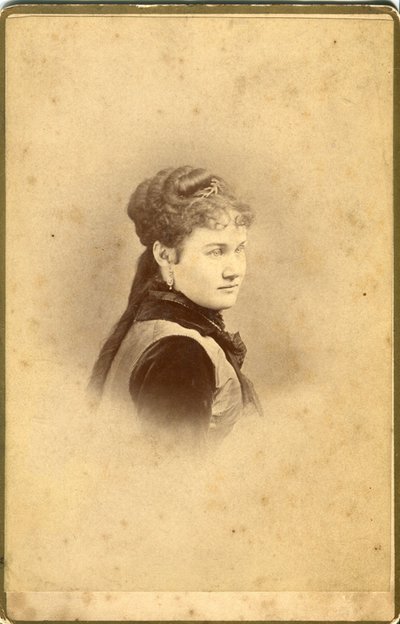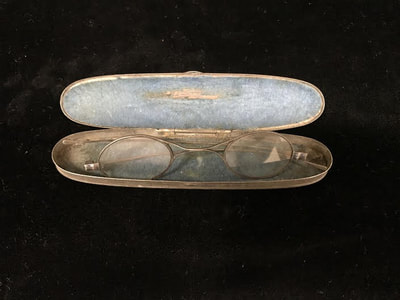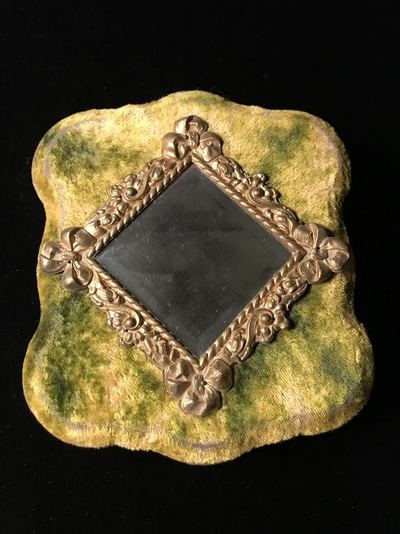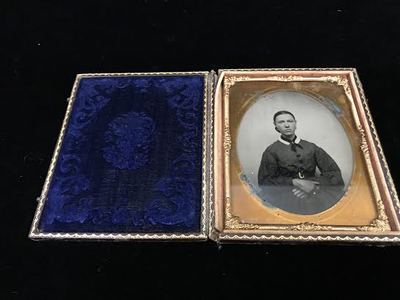The Emmerson Room: From the Victorian Era
prepared by Registrar Alexandra Cox
During the late 19th century, some Humboldt County residents became wealthy through lumber, ship building, and other trades. This generation of individuals, called the Victorians, highly valued wealth and flaunted it in their ornate, elaborately decorated homes. Complementing the new economic changes of worldwide free markets, Victorians placed an emphasis on raw materials, property accumulation and extravagant, conspicuous consumption. Technological advances in woodworking made possible the mass production of elaborate furnishings, windows shingles, doors, cornices, and brackets. The homes were constructed with local redwood and wealthier residents like William Carson included a variety of exotic woods to demonstrate the extent of his wealth. The homes featured custom and mass produced scroll-saw cut shapes like spheres and scallops, which earned them the name of "gingerbread houses" due to their resemblance to the sugar coated Christmas confection. Thanks to work done by concerned citizens in the 1970s and 1980s, many of these homes have been preserved, restored, and recorded into local history and many of these ‘gingerbread homes’ still stand in Humboldt County, especially Eureka and the Victorian village of Ferndale.
(You can learn more about the examples of Victorian architecture in Eureka through the Eureka Heritage Society.)
The homes had many rooms, including parlors. The first parlor was where guests were entertained. Often, a second parlor became the center of family life, later becoming known as the family room and eventually morphing into the modern day living room. Popular home entertainment included singing around the piano, listening to music boxes, playing parlor games, and viewing slides with “magic lanterns” and stereoscopes. Scrapbooks, needlework, and making framed flowers of human hair were popular hobbies, which are all represented in the rooms here. Most holiday celebrations took place in the parlors with parlor games and seasonal décor, which is on display here throughout the year.
The objects and photographs come from local families who lived in Humboldt during the Victorian Era. Some of the furnishings in the Victorian room belonged to notable wealthy families living in Eureka during the late 19th CE. The bed, vanity, and washstand belonged to John & Maggie Livingston. John Livingston was born in Illinois, and soon lived with his uncle in San Francisco after being orphaned, moving to Eureka in 1877 at age 21. He worked as a bartender and later owned the Palace Saloon on 2nd St. Between F & G and the popular Livery Stable at 3rd & D. In 1891 the bedroom suite was given as wedding gift from Maggie's parents, George & Sarah. A duplex at 3rd & J St. was built for the couple as a wedding gift by Maggie's brother, Thomas. The stained glass light fixtures & the table lamp are all from the Amelia Carson Mansion, also built by William Carson, an early resident who built the famous Carson Mansion. Amelia Carson, the wife of Sumner Carson who was prominent in the lumber industry & the son of William Carson, lived her entire life in Eureka from 1872 to 1957. Unfortunately, the Amelia Carson Mansion no longer stands at its location on J St. in Eureka.
(You can learn more about the examples of Victorian architecture in Eureka through the Eureka Heritage Society.)
The homes had many rooms, including parlors. The first parlor was where guests were entertained. Often, a second parlor became the center of family life, later becoming known as the family room and eventually morphing into the modern day living room. Popular home entertainment included singing around the piano, listening to music boxes, playing parlor games, and viewing slides with “magic lanterns” and stereoscopes. Scrapbooks, needlework, and making framed flowers of human hair were popular hobbies, which are all represented in the rooms here. Most holiday celebrations took place in the parlors with parlor games and seasonal décor, which is on display here throughout the year.
The objects and photographs come from local families who lived in Humboldt during the Victorian Era. Some of the furnishings in the Victorian room belonged to notable wealthy families living in Eureka during the late 19th CE. The bed, vanity, and washstand belonged to John & Maggie Livingston. John Livingston was born in Illinois, and soon lived with his uncle in San Francisco after being orphaned, moving to Eureka in 1877 at age 21. He worked as a bartender and later owned the Palace Saloon on 2nd St. Between F & G and the popular Livery Stable at 3rd & D. In 1891 the bedroom suite was given as wedding gift from Maggie's parents, George & Sarah. A duplex at 3rd & J St. was built for the couple as a wedding gift by Maggie's brother, Thomas. The stained glass light fixtures & the table lamp are all from the Amelia Carson Mansion, also built by William Carson, an early resident who built the famous Carson Mansion. Amelia Carson, the wife of Sumner Carson who was prominent in the lumber industry & the son of William Carson, lived her entire life in Eureka from 1872 to 1957. Unfortunately, the Amelia Carson Mansion no longer stands at its location on J St. in Eureka.
Now in the Emmerson Room...
Arsenic and Old Lace: A Victorian Cookbook
Baleen Bones: Structure in Victorian Garments
Have you ever wondered how Victorian garments kept their rigid shapes? The answer was usually whalebone, also known as baleen. Baleen is found in the mouths of filter feeding whales. When baleen is used in garments it is called boning. Thin strips of baleen about the width of a pencil were used in bodices, shirt collars, lapels, and waistbands. Boning was inserted into special channels or directly into the seams of garments.
On display we have two dresses and a bodice. On the open bodice you can see the boning channels that encase the baleen. The dresses have lots of small seams around the waist that make the garment very fitted. Each seam you see has a piece of boning in it. Without this structure these dresses would have very different silhouettes. Despite this rigid appearance, these garments were still easy to move around in. Baleen is flexible and very similar to fingernails in texture.
Have you ever wondered how Victorian garments kept their rigid shapes? The answer was usually whalebone, also known as baleen. Baleen is found in the mouths of filter feeding whales. When baleen is used in garments it is called boning. Thin strips of baleen about the width of a pencil were used in bodices, shirt collars, lapels, and waistbands. Boning was inserted into special channels or directly into the seams of garments.
On display we have two dresses and a bodice. On the open bodice you can see the boning channels that encase the baleen. The dresses have lots of small seams around the waist that make the garment very fitted. Each seam you see has a piece of boning in it. Without this structure these dresses would have very different silhouettes. Despite this rigid appearance, these garments were still easy to move around in. Baleen is flexible and very similar to fingernails in texture.

























